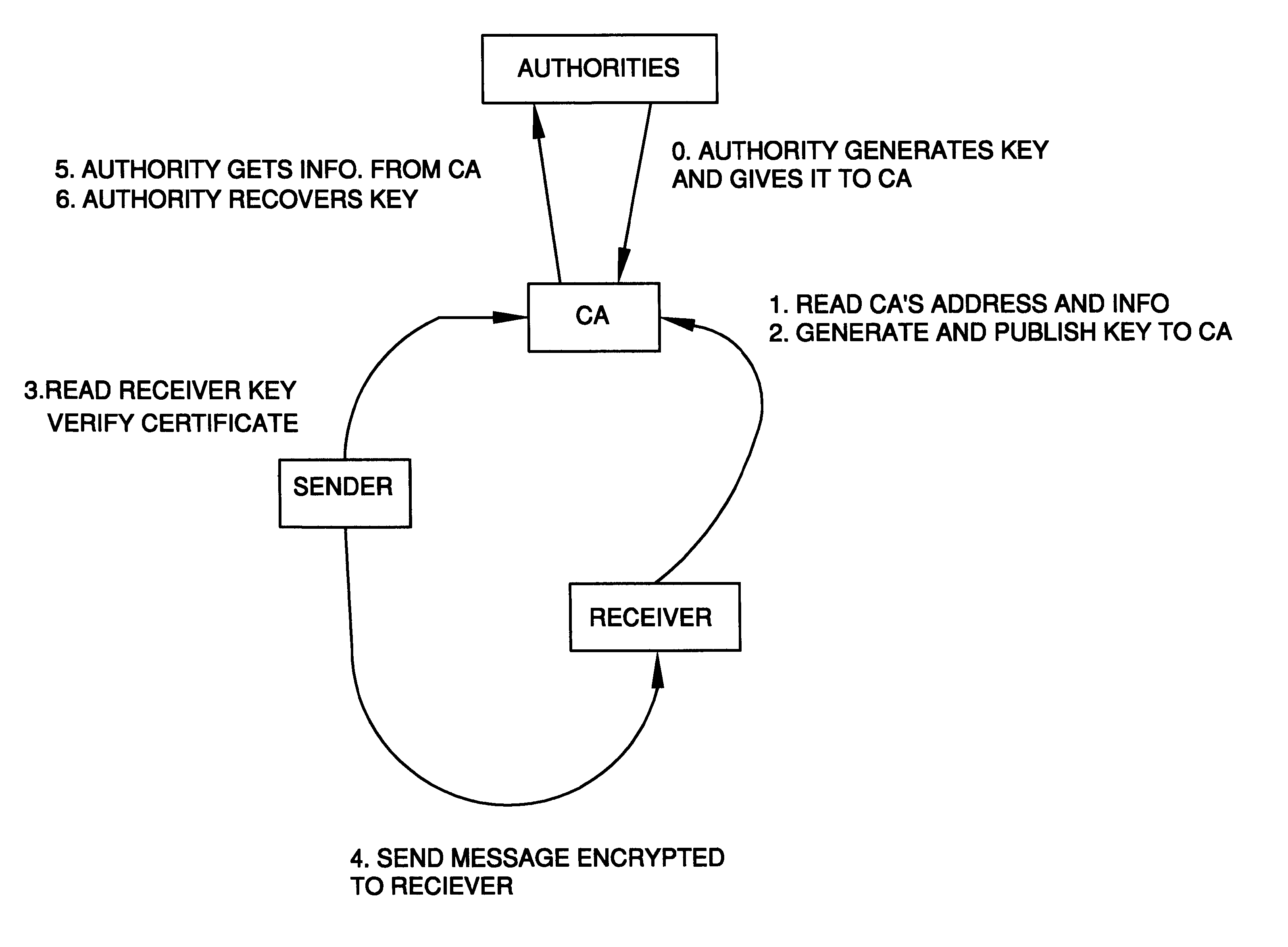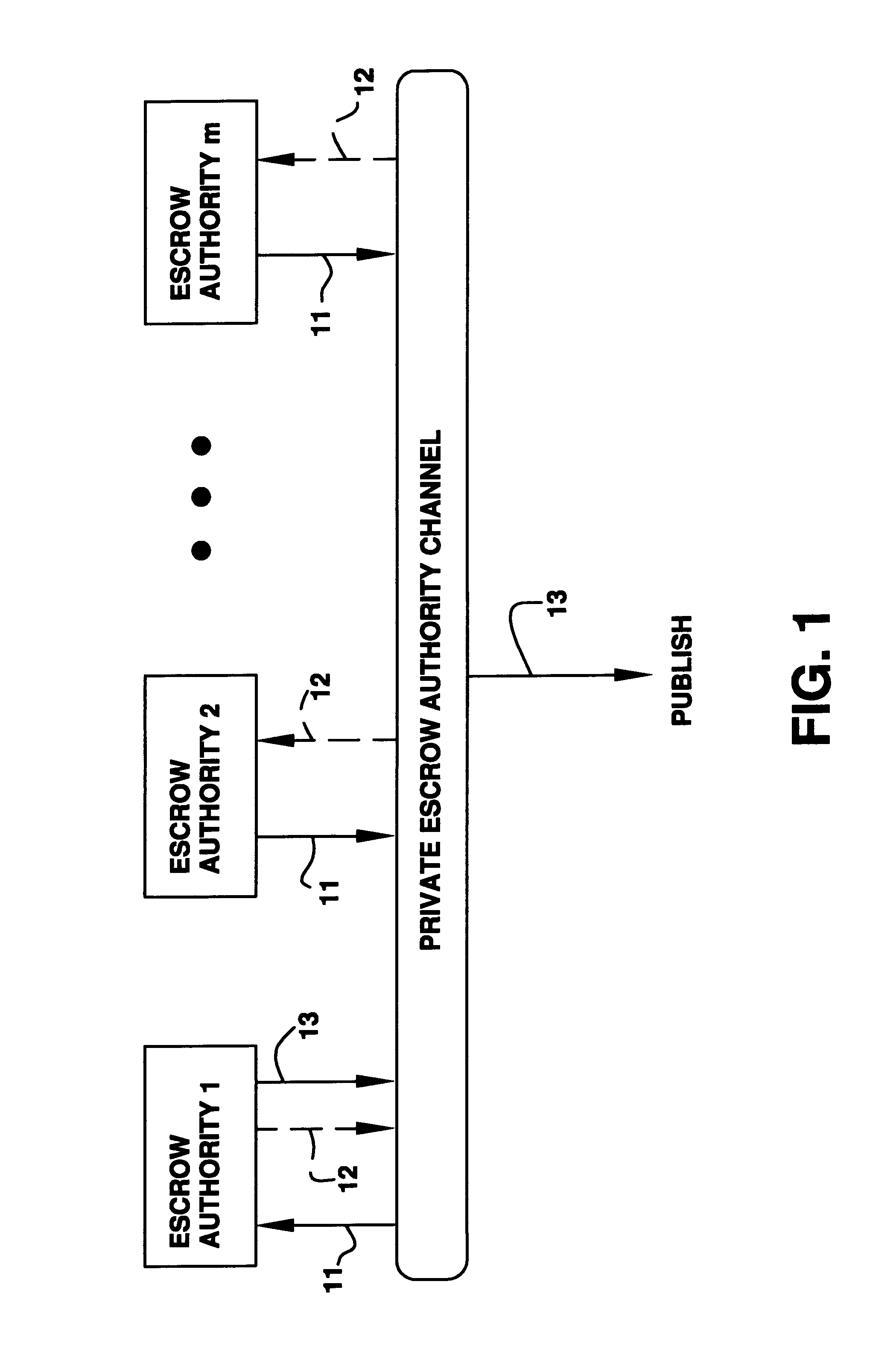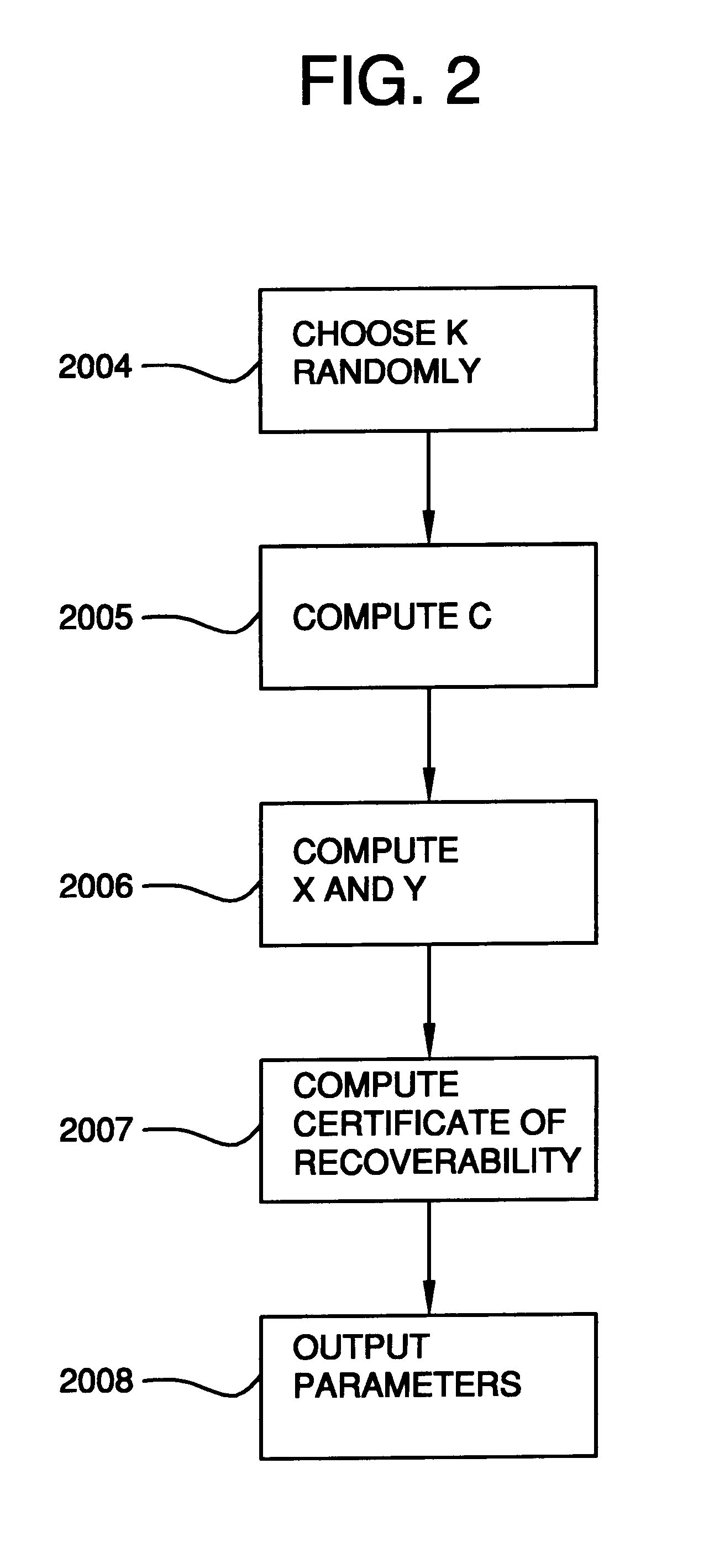PKC's have a drawback, however.
Criminals can use PKC's in the course of criminal activity, since no provision is made to supply law
enforcement with the necessary decryption keys and untappable criminal communications may result.
This solution is therefore not very scalable, since it requires the use of a small number of trusted authorities, and is thus very centralized.
Verification is required since without it a user can easily generate keys which are not recoverable.
It has been shown that the Fair RSA PKC does not meet certain needs of law
enforcement (J. Kilian, F. Leighton, "Fair Cryptosystems Revisited", CRYPTO '95, pages 208-221, Springer-Verlag, 1995), since a shadow
public key cryptosystem can be embedded within it.
The flaw in the RSA FPKC lies in the fact that it is assumed that criminals will use the same secret keys that were provided to the escrow authorities.
These technologies may be overburdening each and every user since they require new protocol extensions which are used in every communication session and further require users to store many keys beyond what is needed for a PKI.
When this abuse is employed, fraud is not detectable.
Software that abuses the Binding ElGamal scheme could be readily distributed and could severely hamper attempts at law enforcement on a large-scale.
(a) they require tamper-resistant implementation, or otherwise require hardware implementation. This imposes high implementation costs and slow establishment of use.
(b) they require use of classified or otherwise proprietary algorithms. This may be unacceptable to users who may be skeptical about the devices security or operation.
(c) they are implemented in
software, and are therefore subject to alteration, resulting in improper operation and possibly untappable communications. This is however, an inherent problem of any software solution (all we can require in this case is that if users employ the software apparatus solely for achieving privacy then their
plaintext or keys are recoverable).
(d) they require excessive protocol interaction in
key generation and / or general use. In addition this interaction may be conducted with a small set of centralized entities, thus making traffic and communication delays a potential
bottleneck. They may require users to possess the trustees keys and use them in every session
initiation, and further require modifications to every communication protocol.
(e) they require excessive numbers of trusted third parties (TTP) to be involved in system operation. Spreading the trust among too many parties increases the risk of security breaches and reduces
scalability.
(f) they require generation of cryptographic keys by TTP's. A corrupt or otherwise compromised TTP may put user security at risk by tampering or disclosing user's keys.
(a) a
key escrow system that can be distributed in
source code form with no loss of security, and hence provides a system that can be publicly scrutinized to insure that it operates properly. Furthermore, since the
key escrow system can be available in software, it can be implemented on a large scale, quickly, and cost-effectively. This implies fast distribution of the system.
(b) in the case that a software solution is deemed unacceptable due to the possibility of modifying of the invention, it can be implemented directly in tamper-resistant hardware. This however adversely affects the gains from (a) (e.g., the easy distribution).
(c) the escrow system requires the least amount of protocol interaction between the escrow authorities, CA, and user, that is theoretically possible. To register a key, a message need only be sent to one of a multitude of CA's. This mechanism is called a key registration based escrow system. In comparison, in the preferred embodiment of Fair PKC's, five messages are sent from the user to the trustees, and then five more messages are sent to a
key management center.
(d) only one private
database is required to implement the escrow system. This
database need only be authenticated and may be kept private to prevent a shadow PKC from being established. User's private keys will not be exposed if the
database is exposed. This contrasts with Fair PKC's in which several databases must be maintained and if they are compromised, the users keys are compromised. This requirement makes the new system rely only on the CA in establishing and certifying users keys as in usual public key systems.
(e) the escrow system allows the user's private key to be verified by anyone. The
verification establishes that the private key is recoverable by the escrow authorities given the user's corresponding public key, the
certificate, and public parameters. In comparison, in Fair PKC's, only the trustees perform this verification. This requirement of the new system is called universal verifiability.
(f) the escrow system can be made shadow public key resistant. Fair PKC's were shown not to be shadow public key resistant, namely they can be abused to publish other PKC schemes (J. Kilian, F. Leighton, "Fair Cryptosystems Revisited", CRYPTO '95, pages 208-221).
 Login to View More
Login to View More  Login to View More
Login to View More 


